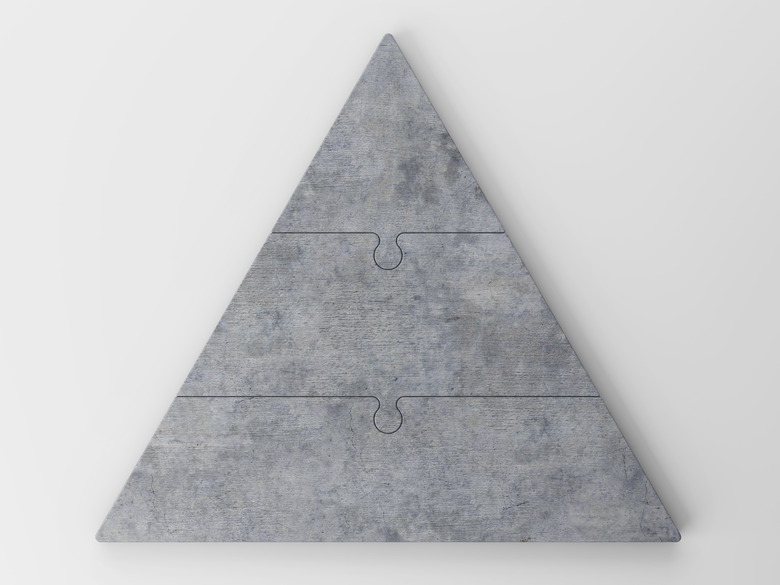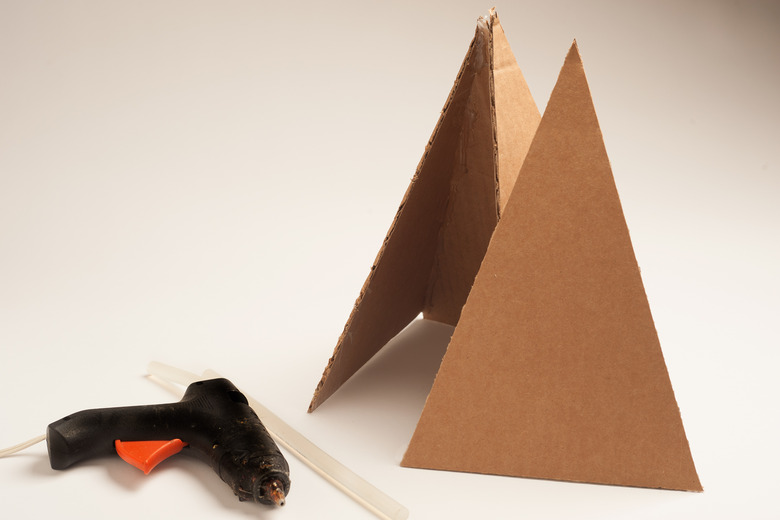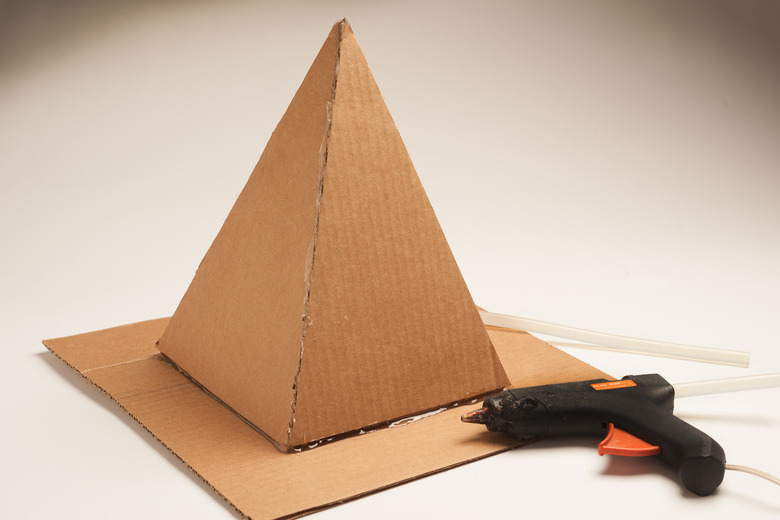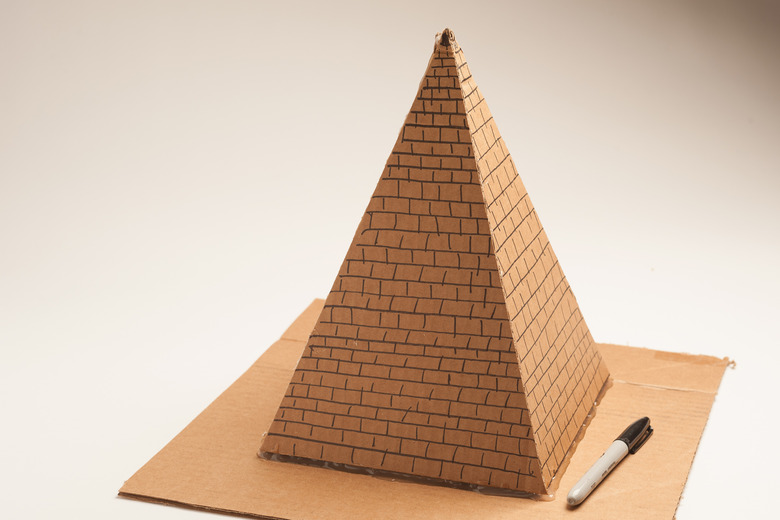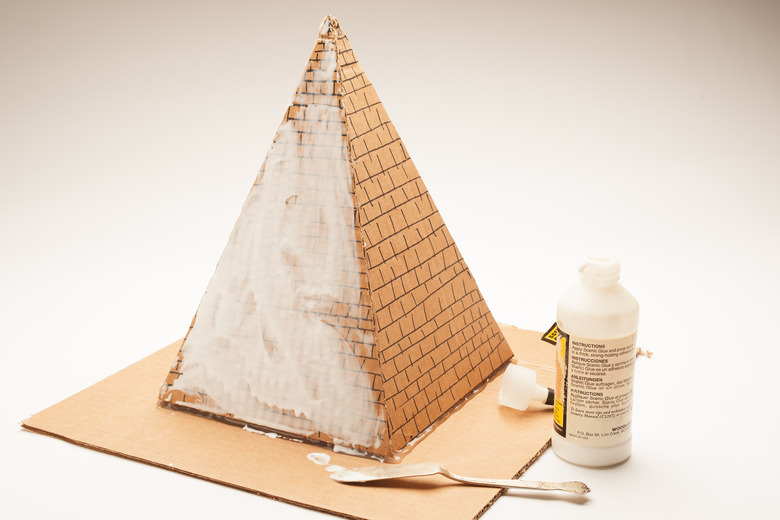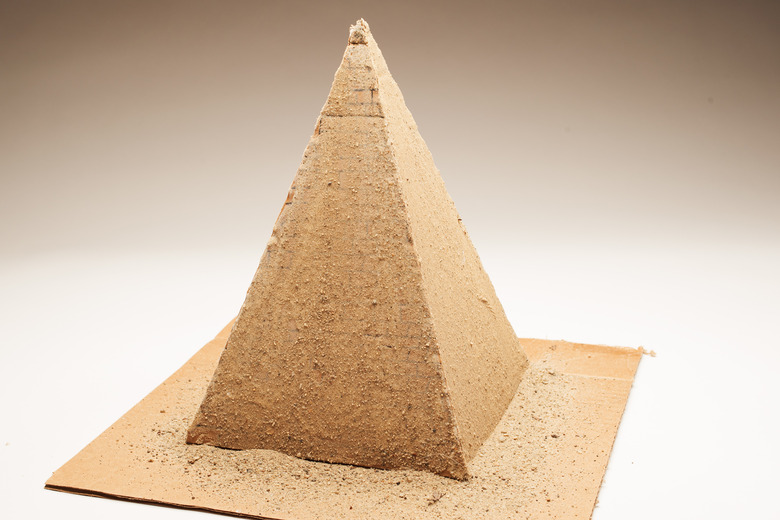How To Build A Pyramid For A School Project
From the Pyramids of Giza to the Memphis Pyramid, human beings have been making these triangular structures for eons. Because the structures have appeared in many ancient cultures across the globe, most children learn about pyramids several times over the course of their education. A popular school project is for students to make model pyramids of their own. Making a realistic pyramid project model for a class project can be easy and inexpensive.
Fun Pyramid Facts
Fun Pyramid Facts
Perhaps the most famous of the structures, the pyramids of Egypt have a long history and have been the focus of numerous films and theories surrounding their construction. The oldest pyramid in the country was built in 2,630 B.C, and the structures regularly found use as tombs for pharaohs, the country's royalty who claimed to be divine. Such was the Egyptians' skill at preserving the bodies of these rulers, that many specimens, known as mummies, survive today.
Not all pyramids have flat sides. Mesoamerican cultures like the Aztecs, Olmecs and Incas built their own pyramids with steps running along their sides. Built from around 1,000 B.C. up until the Spanish conquest of what is now Central and South America, these structures had many uses. Like their Egyptian counterparts, these pyramids had tombs but were also used for military purposes and, the Mesoamericans believed, to house their gods.
Pyramids are common around the world. They have a low center of gravity, and they are very sturdy structures. They appear frequently in nature, as in mountains for instance, and humans still use their shape in buildings to this day.
Building Your Own Pyramid Project
1. Cut the Pieces
Cut out four triangular cardboard pieces that are each 8 inches wide at the base and 12 inches tall. Hot-glue the sides of all four triangles together to form a pyramid shape.
2. Put the Pieces Together
Cut out a piece of cardboard that's 14 inches square. Hot-glue the bottom of the pyramid into the middle of this cardboard piece.
3. Draw Lines
Draw several vertical and horizontal lines on each side of the pyramid with a dark brown or black permanent marker to imitate the appearance of bricks.
4. Add Glue
Drizzle glue over the pyramid and the base. Use a butter knife (or your fingers if you don't mind getting messy) to spread the glue into an even layer over each surface.
5. Add Sand
Pour sand over the pyramid and the base while the glue is still wet.
Things Needed
- Cardboard
- Hot glue
- Brown or black permanent marker
- Glue
- Butter knife
- Sand
Cite This Article
MLA
Clark, Courtney. "How To Build A Pyramid For A School Project" sciencing.com, https://www.sciencing.com/build-pyramid-school-project-5467882/. 1 February 2020.
APA
Clark, Courtney. (2020, February 1). How To Build A Pyramid For A School Project. sciencing.com. Retrieved from https://www.sciencing.com/build-pyramid-school-project-5467882/
Chicago
Clark, Courtney. How To Build A Pyramid For A School Project last modified March 24, 2022. https://www.sciencing.com/build-pyramid-school-project-5467882/
